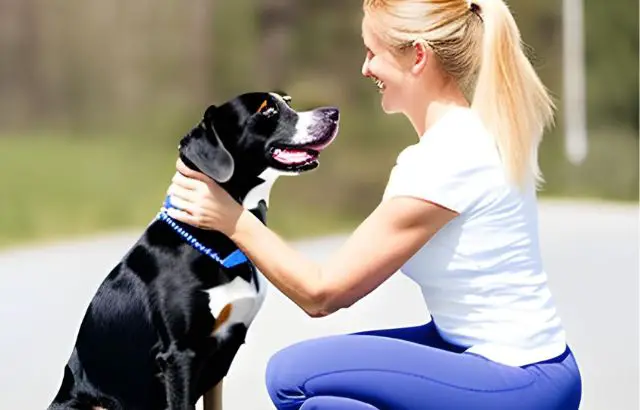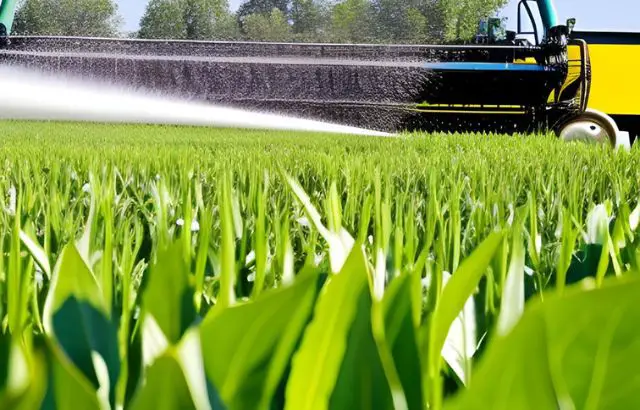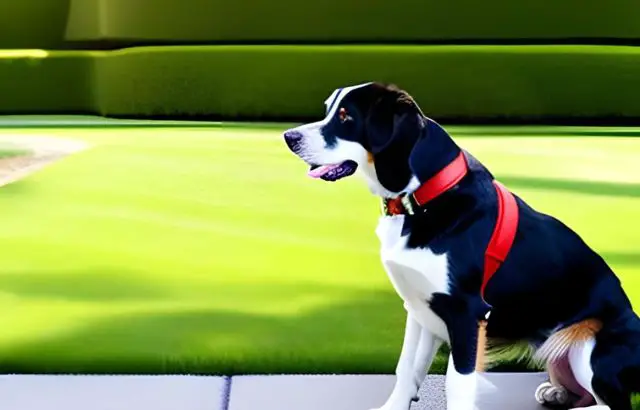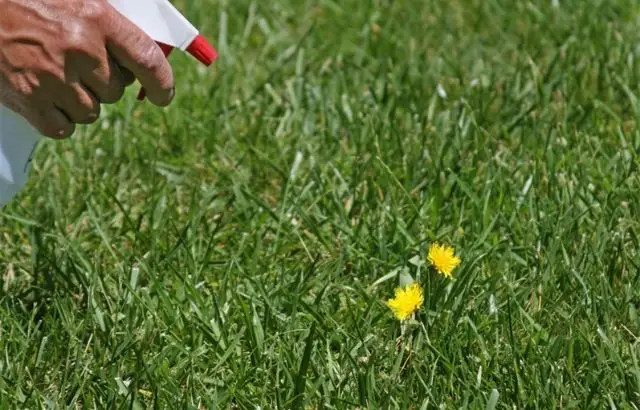Have you ever wondered how to save plants from dog urine, or do they not cause any harm? As man’s best friend, dogs are lovely household pets that bring joy to our homes. However, one of the challenges of keeping pets is the inevitable messes they make. This article will show how to save plants from dog urine.
One of dog owners’ most common problems is the damage caused by their dog’s urine to their plants.
Even well-trained dogs can sometimes choose to relieve themselves on our cherished plants, causing them to wilt and die.
It is disheartening to see our plants suffer, but replacing them could also be costly. Fortunately, ways to save our beloved save plants from dog urine damage exist.
Let’s share some practical tips and tricks to help you protect your plants from dog urine without compromising your pet’s happiness:
- Identify which plants are sensitive to dog urine
- Create a dog-free zone in the garden
- Train your dog to urinate in the designated area
- Provide enough water to dilute the urine
- Install a physical barrier around the plant
- Plant species that are resistant to dog urine
- Use protective barriers to shield your plants from dog urine
- Utilize fertilizers to help protect your plants from dog urine
- Apply an artificial dog repellent
- Use natural repellents
- Avoid fertilizers with high nitrogen content
- Monitor your dog’s behavior and inspect the plants regularly
We’ll also provide insight into why dog urine is harmful to plants and share several common plants that are resilient and less susceptible to damage from urine.
As responsible pet owners, we must ensure that our pets are cared for and that our plants are.
How To Save Plants from Dog Urine
1. Identify which plants are sensitive

If you are a dog owner and have a garden or some plants around your outdoor space, you might know the damage your furry pal’s urine can cause to your flora. Dog urine can cause significant harm to plants if it is not attended to properly.
The high nitrogen level and salts in dog urine can overwhelm plants’ nutrient absorption, leading to browning or yellowing of leaves, stunted growth, or even plant death.
It is crucial to identify which plants are sensitive to dog urine so that you can take the necessary steps to protect them.
Doing so allows you to maintain a healthy garden while allowing your furry friends to enjoy the outdoor space as much as you do.
2. Create a dog-free zone in the garden
If you’re a dog owner with love for gardening, you’ll know all too well the challenges of keeping your plants safe from your furry friend’s urine.

While dog urine can act as a natural fertilizer when diluted, it can also cause burn spots and harm to your plants due to its high nitrogen concentration.
Creating a dog-free zone in your garden can effectively solve this problem. A dog-free zone can be created using simple boundaries or barriers, such as fencing or planters. Restricting your dog’s access to certain areas can keep your plants safe and healthy.
It also helps maintain your garden’s aesthetics by avoiding unsightly yellow patches. With some planning and effort, you can create a beautiful garden that your furry friend can enjoy while protecting your beloved plants.
3. Train your dog to urinate in the designated area
Training your dog to urinate in a designated area can be a simple and effective way to protect your plants from the harmful effects of dog urine.

To begin training, choose an area in your yard or garden where you want your dog to go.
It could be a corner of the yard, a specific patch of grass, or even a specially designated area filled with bark or gravel.
Once you have chosen your designated area, take your dog to that spot whenever you take them out to the bathroom.
Use a specific command or cue, such as “Go potty,” to signal to your dog that it’s time to urinate.
Once your dog enters the designated area, praise them and provide a treat as favorable reinforcement. Consistency is vital in this training process, so always take your dog to the same spot and provide praise and support when they go to the desired area.
With time and patience, your dog will learn to associate the designated area with going to the bathroom, and your plants will be safe from the damaging effects of dog urine.
4. Provide enough water to dilute the urine
If you own a dog and have a garden, you might be struggling with plants dying due to the urine of your furry friend.
Dog urine contains high levels of nitrogen, which can cause damage to plants by causing leaves to turn yellow and eventually die.

However, there are some strategies you can adopt to reduce the impact of dog urine on your plants.
One such strategy is to provide enough water to dilute the urine. The simplest way to do this is to pour a large volume of water onto the spot where your dog has urinated. The water helps dilute the nitrogen, reducing the risk of plant damage.
Additionally, ensuring your dog has access to fresh water can help dilute its urine before it reaches your plants.
By providing enough water to dilute the urine, you can protect your plants from the harmful effects of your dog’s urine.
5. Install a physical barrier around the plant
If you own a dog and have plants in your yard or garden, you may have experienced the unpleasant results of dog urine on your plants. Dog urine contains high nitrogen levels, which can burn and kill plants, leaving ugly yellow or brown spots.
To protect your plants from dog urine damage, installing a physical barrier around the plant can be an effective solution. A barrier like a wire or plastic fence around the base of the plant can prevent your dog from coming into direct contact with the plant and thus save it from harm.

This barrier will also remind your dog to avoid that area and provide a clear boundary between the plant and the dog’s designated potty area.
With a few adjustments to your garden area and some preventative measures, you can enjoy a healthy and beautiful garden for you and your furry friend.
6. Plant species that are resistant to dog urine
If you’re a dog owner, your beloved pet has likely caused damage to your garden at some point. One of the most common problems is the damage caused by dog urine, which contains high levels of nitrogen that can lead to patchy, yellowing grass or dead plants.
To prevent this issue, consider planting species resistant to dog urine. Several plant varieties are known for their ability to withstand the damaging effects of dog urine, including mondo grass, daylilies, and junipers.

Opting for these plants in your garden allows you to enjoy a healthy and vibrant outdoor space while allowing your dog to roam freely.
However, it’s important to note that even resistant plants may still suffer some damage if your dog frequently urinates in the same spot.
It’s always a good idea to train your dog to go to a designated area and to dilute the urine with water if you notice any discoloration on your plants.
7. Use protective barriers to shield your plants from dog urine
Protecting your plants from dog urine can be difficult for any pet owner. However, taking precautions such as using protective barriers can significantly reduce the negative impact of dog urine on your precious plants.
By implementing protective barriers, like stone or wood chips, or placing fencing around the perimeter of the plants, you can shield them from direct urine saturation. Additionally, you can create a designated area for your pet to relieve themselves away from your plants to prevent any urine from reaching them.

It’s essential to regularly monitor and inspect your plants for any signs of damage caused by pet urine, as early detection can help prevent further damage.
Overall, using protective barriers and designating a specific area for your pet to go potty are practical steps to save your plants from potential damage due to dog urine.
8. Utilize fertilizers to help protect your plants from dog urine
Dog urine can cause damage to your plants with its high concentration of nitrogen, salt, and other minerals. Fortunately, there are several methods to protect your plants from the adverse effects of dog urine.
One effective method is to utilize fertilizers. Select a fertilizer high in calcium and magnesium, as these nutrients can neutralize the effects of nitrogen in dog urine.

When applying the fertilizer, ensure it is distributed evenly across the affected areas. Additionally, consider limiting your dog’s access to the areas surrounding your plants, or train them to urinate in designated yard areas.
Regular watering of the plants will also help dilute the soil’s nitrogen. Using fertilizers and other preventative measures can protect your plants from dog urine and help your garden thrive.
9. Apply an artificial dog repellent
If you are a dog owner, you know dogs love to mark their territory by urinating on plants. While it may seem harmless, the urine can harm plants, causing them to wither and die.
You can apply an artificial dog repellent to protect your plants from the damaging effects of dog urine. These repellents are designed to discourage dogs from urinating you don’t want them to.

Most artificial dog repellents contain natural ingredients such as citronella, lemon, and eucalyptus, which dogs find unpleasant.
Spray the repellent on the affected area, including the leaves and stems of your plants, to keep dogs away. However, it is essential to note that these repellents should use sparingly and per their instructions to avoid any adverse effects on your plants.
10. Use natural repellents
Natural repellents are a great way to save your plants from dog urine damage. There are several natural repellents that you can use to keep dogs away from your plants. Some of these include ammonia, vinegar, and citrus oils. Ammonia has a strong smell that dogs don’t like so that you can add it to your watering can and pour it around your plants.
Vinegar can also be used as a natural repellent by spraying it on the ground around the plants. Citrus oils, such as lemon or orange, can be sprayed themselves to deter dogs from urinating on them.

It’s important to note that while natural repellents can be effective, they should use in moderation as they can harm your plants if overused.
Additionally, it’s essential always to supervise your dog and provide them with a designated area to relieve themselves to prevent further damage to your plants.
11. Avoid fertilizers with high nitrogen content
Avoiding fertilizers with high nitrogen content is essential when maintaining a healthy garden, especially if you have pets.

The nitrogen in fertilizers can react with the urea found in dog urine, leading to an overabundance of nitrogen in the soil, which can be detrimental to your plants.
It can result in stunted growth, yellow or brown foliage, and even plant death. To avoid these issues, consider using fertilizers with lower nitrogen content or organic alternatives.
Training your pets to urinate in a designated area can help prevent damage to your plants while promoting good behavior.
By being mindful of the impact of dog urine on your garden, you can help ensure its continued health and beauty.
12. Monitor your dog’s behavior and inspect the plants regularly
Monitoring your dog’s behavior is crucial to keeping your plants safe from your furry friend’s urine.

Dogs have a strong sense of smell and may be attracted to specific plants that they find appealing. Inspecting your plants can help you identify any signs of damage caused by your dog.
Training your dog to avoid urinating on your plants is also essential by providing them with an appropriate area to relieve themselves.
Additionally, providing your dog with plenty of exercise and opportunities to go outside can reduce the likelihood of them urinating on your plants.
By taking these steps, you can help ensure your plants stay healthy and vibrant.
Expert Opinion
Remember that dog urine can create a challenging situation for plant owners, but effective preventative and treatment measures can take to save plants from damage caused by it.
By using barriers, training, and redirecting dogs, as well as adopting suitable plants and soil additives, it is possible to maintain a beautiful garden or indoor plant collection while keeping furry companions healthy and happy.
With some patience and effort, both plants and dogs can coexist in harmony.




